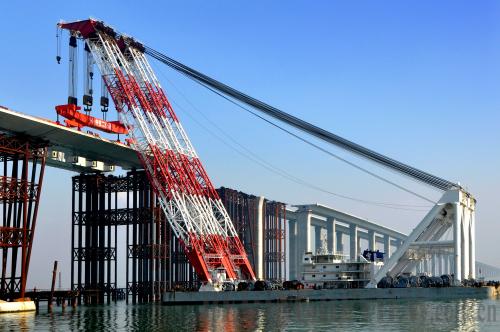|
 |
|
ZHANG PING (COURTESY OF ZHANG PING) |
As 2009 draws to a close, Beijing Review interviewed several economic experts on the performance of the Chinese economy in the aftermath of the global financial crisis. Beijing Review reporter Liu Xinlian interviewed Zhang Ping, Deputy Director of the Institute of Economics at the Chinese Academy of Social Sciences, who reflected on the overall economic performance and problems of the economy in 2009.
Beijing Review: What was the most pressing matter for China's economic development in 2009?
Zhang Ping: Weathering the sweeping financial crisis was the most urgent task at the beginning of the year. As we all know, the Chinese economy achieved a growth rate of 13 percent in 2007, falling to 9 percent in 2008 as a result of the financial crisis, and later plummeting to 6.1 percent in the first quarter of 2009. Against this backdrop, the Chinese Government set an 8-percent annual growth rate goal, while implementing proactive fiscal and appropriately accommodative monetary policies. In November, deflation came to a halt and the consumer price index (CPI) turned around for the first time since February. Estimates show the annual growth rate will be 8.3 percent and have predicted a stable recovery to average levels.
What do you think about the effects of the policies the government put in place in response to the economic crisis?
|

|
|
EMPLOYMENT PROJECT: The Qingdao Bay Bridge, funded by the government, is under construction and will be put into use in 2010 (LI ZIHENG) | The first point I want to emphasize is the forcefulness of the Chinese Government's policies. Its fiscal policy, including the 4-trillion-yuan ($586 billion) stimulus plan, 500-billion-yuan ($74 billion) tax breaks resulting from the value-added tax reform, and export rebate increases, accounted for more than 7 percent of the total GDP. The commitment to solving the financial problems has been much stronger than those of European countries and the United States that were stricken more seriously by the crisis. In this sense, it is fair to say that China's stimulus plan was the most dynamic globally.
Second, in an effort to alleviate the negative impact of the financial crisis, the Chinese Government adopted both a proactive fiscal policy and appropriately accommodative monetary policy. In the past, China only used one or the other, but never both. What's more, the monetary policy has never been more far-reaching than it is now, and the Chinese Government continues to play a major role in lifting the country out of the economic doldrums.
What was the difference between China's and the United States' response to the crisis?
Major problems for European countries and the United States arose mainly from their financial institutions, in which the process of de-leveraging financial derivatives caused a scarcity of currency in the real economy. In response, European countries and the United States implemented loose monetary policies by issuing large amounts of base money. As for those financial institutions that stood on the verge of bankruptcy, the government provided financial support by injecting liquidity to increase individual banks' credit ratings and protecting them against a potential chain reaction of bank failures. The injection of liquidity and financial aid into the ailing financial institutions through open market transactions made the withdrawal of counter-crisis policies easier and more flexible. After the economy recovers to a satisfactory level, Western governments can retrieve excess currency by selling bonds. But what should not be neglected is that their bailout plan failed to uplift the employment rate.
When the economic crisis bore down on China, the country had just initiated a large-scale urbanization plan that required a large investment in infrastructure. China's urbanization rate in 2008 was 46 percent and will be at most around 47 percent this year, which is much lower than the global average and that of developed countries.
For this reason, the Chinese Government formulated a stimulus plan focusing on infrastructure construction. Looking to increase investments in infrastructure, the Central Government provided a large amount of loans to local governments, financial institutions and large state-owned enterprises. Even amid the crisis, we saw a construction surge come underway, which included the construction of high-speed railways and metro systems. These will play a vital role in connecting metropolitan areas and propelling long-term economic growth.
Due to the long investment period necessary for infrastructure construction, it will be more difficult for China to withdraw its stimulus plan, compared to similar plans in Europe and America, especially since this year's investment requires a considerable amount of follow-up funding.
|
